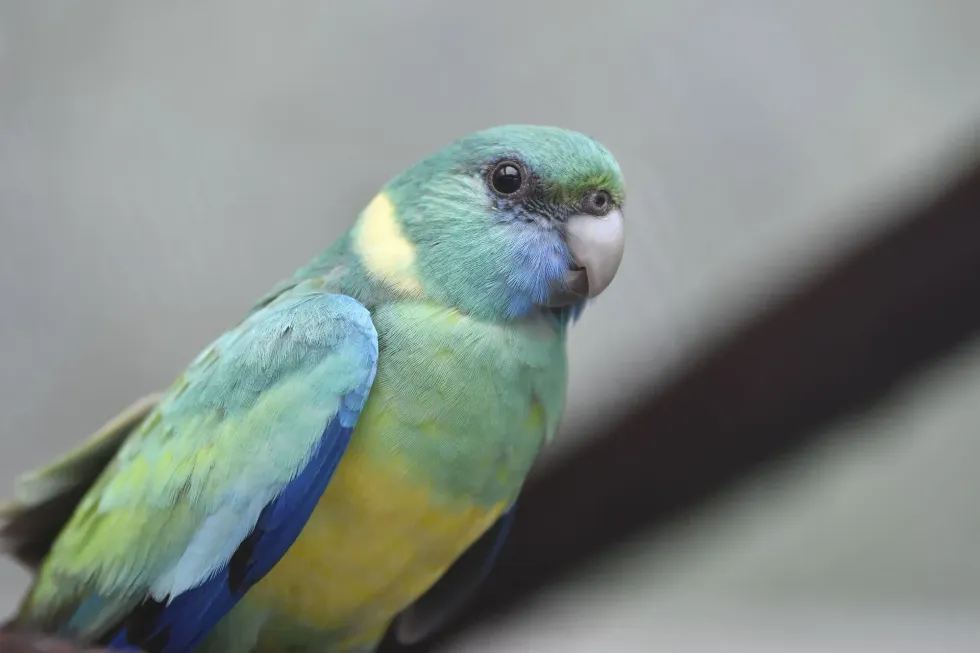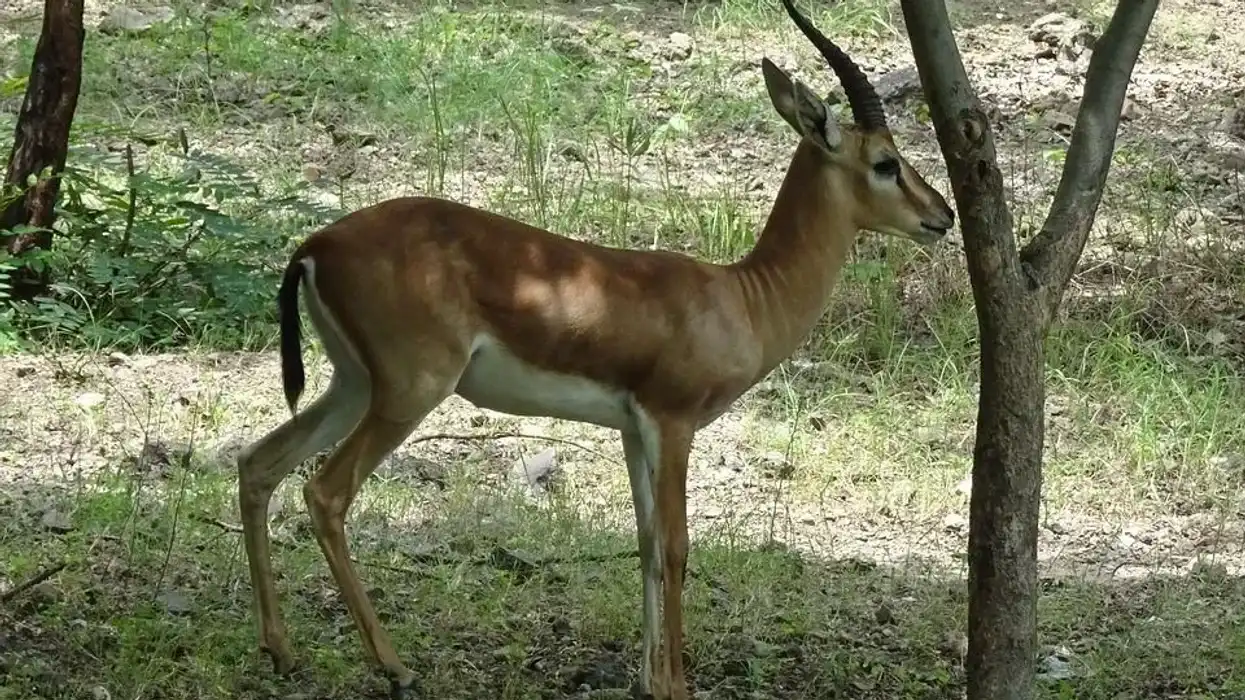Do you like parrots? Then here we have all the information on the cloncurry parrot.
The cloncurry parrot (Barnardius zonarius macgillivrayi) is a subspecies of the Australian ringneck parrots, along with three other subspecies, Port Lincoln parrot (Barnardius zonarius zonarius), twenty-eight parrot (Barnardius zonarius semitorquatus), and the mallee ringneck parrot (Barnardius zonarius barnardi). The cloncurry parrot can be distinguished from the other subspecies by its geographic distribution and some features of appearance.
This Australian parrot has an overall dull green body color. A little pale blue color can be seen on the lower ear coverts and cheeks. They also bear a conspicuous yellow ring on their abdomen.
These birds can be kept in an aviary in pairs. They are not very aggressive, but it would be wise to not keep more of them together in one aviary.
Read on to know more about the cloncurry parrot, and if you like this article, then also check out the blue winged parrot and elegant parrot.
Cloncurry Parrot Interesting Facts
What type of animal is a cloncurry parrot?
The cloncurry parrot (Barnardius zonarius macgillivrayi) is a subspecies of the bird species, Australian ringnecks.
What class of animal does a cloncurry parrot belong to?
The cloncurry parrot (Barnardius zonarius macgillivrayi) belongs to the genus Barnardius and class Aves of animals.
How many cloncurry parrots are there in the world?
The population of this Australian parrot in an exact number is not known. However, they have been seen to be pretty common within their habitat range. Their population trend in the wild also shows an increasing pattern.
Where does a cloncurry parrot live?
The cloncurry parrots are endemic to northwest Queensland and the eastern zone of the northern territory of Australia. More specifically, they are found from the South of Burketown to Boulia and from Lake Eyre to the Gulf country.
Kynuna is thought to be the habitat border of these birds in the east and Camooweel is thought to be the west border.
What is a cloncurry parrot's habitat?
The primary habitats of the birds are semi-arid woodlands, wheatbelt farmlands, dense forests along with the coastal areas, and mallee. Their preferred habitat includes riverside forests and savannah woodlands of hilly areas of Australia.
Who do cloncurry parrots live with?
It's not known whether cloncurry parrots are social or solitary in nature. However, ringneck parrots, in general, are known to be social birds.
How long does a cloncurry parrot live?
These birds are known to live for about 15 years on average.
How do they reproduce?
The breeding season of the cloncurry parrot (Barnardius zonarius macgillivrayi) occurs around June to September. The breeding season largely depends on the arrival of rain within their habitat range.
High numbers of hybridization have been seen among these birds. Not much is known about the courtship behavior between the male and female birds of the species.
After copulation, the female lays about four to seven eggs on average. The female alone incubates the eggs for the next 19-20 days.
The chicks are fed only by the adult female for the first week and from then on, both parents care for the chicks. The chicks leave the nest at about five weeks after the eggs hatch, but they may stay a little longer with the parents.
What is their conservation status?
These birds are a subspecies of the bird species, Australian ringneck birds. The subspecies, cloncurry parrot, is Not Listed in the International Union for Conservation of Nature Red List.
However, these birds are known to be common within their habitat range In the wild. In addition, the species they are a part of, the Australian ringneck is listed as Least Concern according to the International Union for Conservation of Nature.
Cloncurry Parrot Fun Facts
What do cloncurry parrots look like?
Cloncurry parrots are medium-sized parrots, like Meyer's parrots. However, they are the smallest subspecies among the four subspecies of Australian ringnecks.
These birds look similar to mallee ringneck parrots but you can spot them easily due to their duller appearance than the malle ringneck parrots. Their forehead is yellowish-green in color. They have pale blue-colored lower ear coverts and cheeks.
A conspicuous pale yellow ring can be seen on their abdomen. Their lesser wing coverts along with their dorsal side, starting from the back of their head to the lower back are pale green colored.
How cute are they?
These birds can be adorable and beautiful in appearance. They are also not very aggressive, which attracts many people to keep them as pets.
How do they communicate?
Cloncurry parrots communicate vocally. They have various calls. Their usual call is a 'whee-eck' and more chattering notes. They also have a very harsh and loud 'kling-kling-kling', or 'put-kleepit-kleepit' call.
This call can be distinguished from the similar call of a mallee ringneck parrot by the harsher note of a cloncurry parrot. Their alarm call sounds like a short 'vatch', and their foraging call when on trees, sounds like a 'chuk-chuk' or 'kwink-kwink'. They are usually silent when they are foraging on the ground.
How big is a cloncurry parrot?
An adult cloncurry parrot (Barnardius zonarius macgillivrayi) is about 13 in (33 cm) in length. They are slightly smaller than the Amazon parrots. An adult Amazon parrot is about 10-20 in (25-50 cm) in length.
How fast can a cloncurry parrot fly?
The speed at which a cloncurry parrot flies is not known. However, most parrots, in general, can fly at an average speed of 40-50 mph (64.4-80.5 kph). We can assume that the cloncurry parrots can fly around this speed limit as well.
How much does a cloncurry parrot weigh?
An adult cloncurry parrot (Barnardius zonarius macgillivrayi) weighs about 4.2-4.8 oz (120-135 g) on average.
What are the male and female names of the species?
The males of the species are called cocks and the females are called hens.
What would you call a baby cloncurry parrot?
A baby cloncurry parrot is called a chick or a hatchling.
What do they eat?
These birds are omnivorous in nature. Their food includes fruits, buds, seeds, leaves, and sometimes nectar. They have been seen taking leaves of capeweed and chinaberry trees.
They also take corms of onion grass and seeds of herbaceous plants and grasses. Their stomach contents have also been observed to hold food, like seeds of nightshade and different kinds of mistletoes. Their animal-based diet in the wild includes larvae of different kinds of insects.
Are they dangerous?
They are not dangerous at all. They can be a little aggressive, but they are known as the least aggressive subspecies among the four subspecies of Australian ringnecks.
Would they make a good pet?
Cloncurry parrots can be quite good pets. They are not that aggressive in nature, so it's better to keep one pair of them in an aviary.
The size of the aviary should at least be 9.8 ft (3 m) in length and about 3-3.5 ft (0.9-1 m) in width. Keep some leafy branches in the aviary so that they can feed on them and some branches at different heights where they can perch. Feed them seeds, green leafy vegetables, and fruits.
Did you know...
All Australian ringneck parrots choose to nest in holes of trees. A cloncurry parrot (Barnardius zonarius macgillivrayi) prefers river red gum trees to nest.
Why are twenty-eight parrots called twenty-eights?
The twenty-eight parrot is another subspecies of the Australian ringneck species along with the mallee ringneck parrot, cloncurry parrot, and Port Lincoln parrot. The twenty-eight parrot or the 28 parrot got its common name for its tripled noted call, which sounds like 'tooweet terweet' or 'twenty-eight'. These birds, like cloncurry parrots, also make extremely good pets.
How many eggs do cloncurry parrots lay?
The cloncurry parrots lay as many eggs as the other subspecies of Australian ringnecks. They lay about four to seven eggs.
Here at Kidadl, we have carefully created lots of interesting family-friendly animal facts for everyone to discover! Learn more about some other birds from our blue-capped cordon-bleu facts and blue cotinga facts pages.
You can even occupy yourself at home by coloring in one of our free printable parts the bird coloring pages.
Second image by John Robert McPherson.









